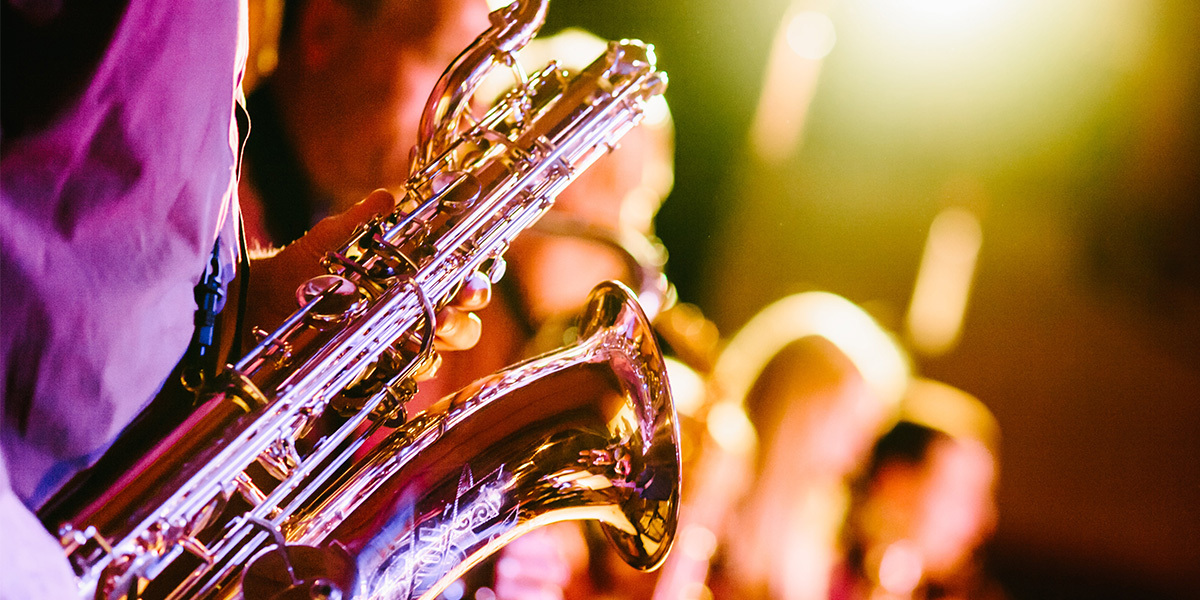The Subtlety to Baritone Sax Ensemble Playing
by Mark Hiebert
Date Posted: April 09, 2019

“Hey man, great set! I love the Bari. Are you guys going to play that one song?”
“Thanks. What one song are you talking about?”
“Oh you know it. It goes ‘Baaaaa weep ba—“
“Oh.” Eye roll. “You mean ‘Moanin’’. We are actually performing the music of Billy Strayhorn, and that’s probably not going to come up tonight.”
“Well I’m pretty sure Billy Strayhorn’s Bari player would have known the song I’m talking about. You should play it in the second set.”
Insert a pause to swallow my words. “Sure thing. I’ll bring it up.”
Somehow “Moanin’” by Charles Mingus has become the “Freebird” of the baritone sax. It’s a great piece of music that every baritone player has or will have played at some point, but the responsibility of the baritone saxophonist in the big band goes far beyond playing their individual tribute to Pepper Adams and Ronnie Cuber on “that one song.”
Actually, the role of the baritone saxophone in a large ensemble setting is extremely important in crafting the sound of the ensemble, and must be approached with finesse and in-the-moment decision making about pitch and volume adjustment to fully support the other sections of the band. In this article, I’m going to discuss the way the sound of the baritone gets used in big band compositions, analyze some of my favorite ensemble baritone moments, and share some other recordings of baritone features with big bands.
The Role of the Baritone Saxophone
In the Ensemble
The baritone player must remain aware of his role in the music and changes his role to compliment the music. Often, the baritone is scored as part of the saxophone section, part of the trombone section, doubling the fourth trumpet, or doubling the bass player and bass trombone on bass lines. Even these roles can be broken down more specifically.
Within a saxophone section, baritone will sometimes double lead alto in sax solis, sometimes play in unison with the two tenors, and sometimes play a part opposite the rest of the section with a call and response to the altos and tenors. Within a single eight bar phrase, the job can also change from one section to the other and back again.
Intonation
Even minor performance adjustments can go a long way. For example, many of the best professional lead trumpet and lead alto players may play a few cents sharp to help project their slightly brighter sound over the section or over the band. On the other hand, professional bass players and bass trombonists rarely play out of tune and need to remain consistent to support the intonation of the entire ensemble. This means that if you are playing a sax soli in octaves with lead alto and then you switch to play a bass line with the bass and bass trombone, you may have to adjust very slightly from the higher pitch of the alto to the (hopefully) very in tune playing from the bass instruments.
Timbre
Aside from intonation, the way you adjust the timbre of your instrument can support or affect the sound of the passage. In saxophone solis, playing with a reedier sound may match well with the section, but in playing passages with brass sections, taking the reedy quality out and playing with a purer and more focused tone might be important in creating a quality section sound. I would consider the difference in performing the melody section to “Three and One” with a trumpet player who is emulating Thad Jones compared to the opening measures of Tadd Dameron’s arrangement of “If You Could See Me Now.” You need to be able to adjust the timbre of your instrument enough to compliment what’s going on behind you.
Recordings from Notable Bari Players
Some of my favorite moments in large ensemble baritone playing come from Charles Fawlkes in the Count Basie band and Harry Carney in the Duke Ellington band. Each of these players was able to make in-the-moment changes of volume, articulation, and intensity that (in my opinion) made the iconic sounds of some of history’s most famous big band recordings.
Two of my favorite recordings are the original recording of “Shiny Stockings” from the Count Basie album “April in Paris,” and the recording of “Star-Crossed Lovers” from the Ellington album “Such Sweet Thunder.” Neither of these pieces is a baritone saxophone feature, so examining the way that these players attack their own role in the ensemble is important in providing some clarity to quality section playing.
Following the opening brass statement of the melody to “Shiny Stockings”, the saxophone section hits on the “and of one” and all sustain a low concert Eb. For the baritone, this brings Charles Fawlkes to a low C marked with a forte dynamic. In any true forte performance of this note, Fawlkes could probably bury not only the saxophone section, but also the rest of the band and part of the audience, but in this particular moment, we don’t hear his note stand out above the low C played by Marshall Royal. Following the saxophone soli and the trumpet solo break, the saxophones have a soli background that alternates between solo baritone and the entire saxophone section. In this moment, Fawlkes plays his solo parts significantly louder than his initial entrance in the first moment of the chart, and plays his part with the saxophone section a little quieter to match the section. The timbre and volume of the baritone is unmistakably very important in this part and rightfully performed more soloistically. By the end of the chart, the baritone is back to blending into the ensemble behind a beautiful lead trumpet performance by Reunald Jones.
Duke Ellington’s “Star Crossed Lovers” is a very different more orchestrally-scored composition featuring Johnny Hodges on lead alto. Harry Carney consistently plays at or above the volume of the rest of the saxophone section on both sustained and moving passages. This volume adjustment causes the recording to sound darker and more lush, even in the context of a truly beautiful Ellington album. In the B section of the tune, Carney’s first entrance is a whopping forte piano played significantly louder than the rest of the band that then fades into the sound of the section. This is my favorite sound in large ensemble baritone playing, and comes back a few measures before the end of the piece. The reedy, rich, beefy sound of Carney’s sustained notes throughout this recording is almost as special to me as Johnny Hodges timeless interpretation of the beautiful classic melody.
For some other great examples of baritone saxophonists featured with big bands, please consider finding Maria Schneider’s album “The Days of Wine and Roses” to hear Scott Robinson on “The Willow”; Duke Ellington’s album “Live at the Blue Note” to hear Harry Carney on “Sophisticated Lady”; and the Vanguard Jazz Orchestra’s album “Monday Night at the Village Vanguard” to hear Gary Smulyan on “Body and Soul”. These are a mere three recordings of featured baritone saxophonists, but between these three amazing performances these artists show the incredible range of sound and expression of the baritone sax.

Mark Hiebert is an in demand saxophonist and educator in the Chicago area, and is regularly involved in original projects and collaborations with musicians and educators from around the country. He has earned both his Bachelor’s Degree in Music Education and his Master’s Degree in Jazz Composition from DePaul University in Chicago, IL.
Shorty after arriving in Chicago, Mark began his music career, and has since performed and recorded on saxophone and woodwinds with Natalie Cole, the Four Tops, the Temptations, Frankie Valli, The Lionel Hampton Orchestra featuring Jason Marsalis, Jeff Hamilton, Malik Yusef, Benny Golson, Phil Woods, Tito Puente, Jr., Daphne Willis, and Too Live Crew, along with fine bands like the Chicago Afro-Latin Jazz Ensemble, Mulligan Mosaics, Rob Parton Big Band, Joe Clark Big Band, Model Citizens, M13, Tom Matta Big Band, Ian Torres Big Band, Model Citizens Big Band, and the Alan Gresik Swingshift Orchestra.
Mark continues to perform and record regularly in the Chicagoland area on saxophones, clarinet, bass clarinet, and flute, and is a regular member of Arcana (led by Trumpeter and Composer Joe Clark) and Milk Punch (a bi-annual Gerry Mulligan tribute with collaborator Trumpeter James Davis).